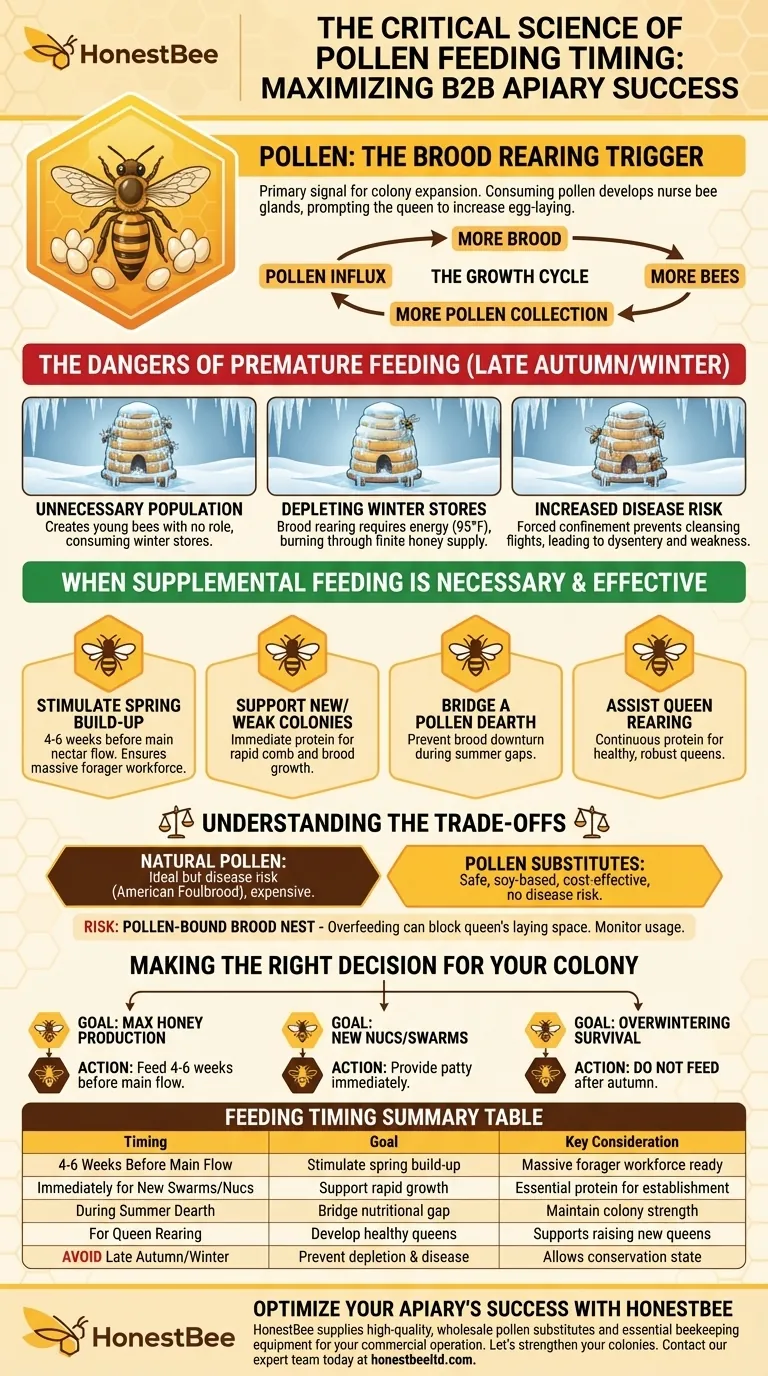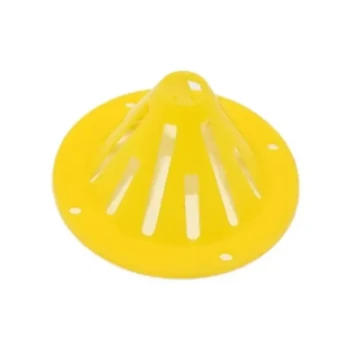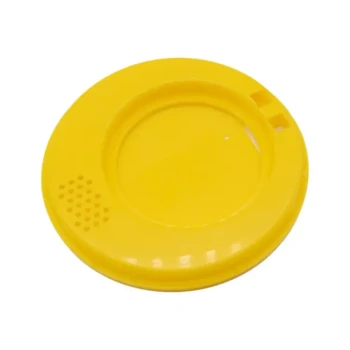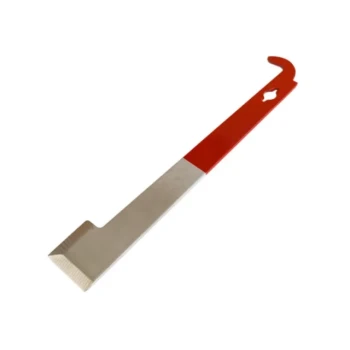Timing is critical when feeding pollen to bees because it is the primary trigger for brood rearing. Providing a protein source like pollen or a pollen substitute sends a powerful biological signal to the queen to begin laying eggs. Initiating this population growth at the wrong time of year can deplete vital resources and put the entire colony at risk.
The core principle to understand is that feeding pollen isn't just providing food; it's telling the colony to invest in expansion. Mis-timing this signal creates a population of young bees that the colony cannot sustain through periods of cold or dearth, leading to resource depletion and increased disease risk.

The Biological Signal of Pollen
Pollen as a Brood Trigger
Pollen is the honeybee's primary source of protein, vitamins, and lipids. Its availability is the most significant natural indicator that conditions are right for raising a new generation of bees.
When nurse bees consume pollen, their brood-food-producing glands develop, and the entire colony shifts into a state of expansion. This prompts the queen to significantly increase her rate of egg-laying.
The Cycle of Growth
A sudden influx of pollen, whether natural or provided by a beekeeper, creates a feedback loop. More pollen leads to more brood, which matures into more bees, which can then collect even more pollen, further fueling the colony's growth.
The Dangers of Premature Feeding
Creating an Unnecessary Population
Feeding pollen too early, such as in late autumn or deep winter, stimulates the queen to lay eggs when the colony should be in a state of conservation.
This creates a population of young nurse bees that have no productive role. They consume valuable honey stores that the colony needs to generate heat and survive the cold months.
Depleting Critical Winter Stores
Raising brood is an energy-intensive process. A winter cluster must maintain a temperature of around 95°F (35°C) in the brood area, regardless of the outside temperature.
Forcing the colony to do this during the coldest part of the year rapidly burns through their finite winter honey supply, increasing the risk of starvation.
Increasing Disease Risk
Young bees that are raised out of season still need to perform cleansing flights to defecate. During long stretches of cold, rainy, or snowy weather, they are confined to the hive.
This forced confinement can lead to an outbreak of dysentery and other diseases, seriously weakening the colony right before spring arrives.
When Supplemental Feeding is Necessary
To Stimulate Spring Build-up
The most common and effective use of pollen feeding is to stimulate colony growth 4-6 weeks before the main nectar flow begins in your area. This ensures a massive forager workforce is ready to capitalize on the abundance of nectar.
To Support New or Weak Colonies
A newly hived swarm or a small nucleus colony needs an immediate protein source. This allows them to quickly draw out new comb and raise the brood necessary for rapid population growth.
To Bridge a Pollen Dearth
Sometimes, even during summer, there can be a "gap" in blooming plants, leading to a temporary pollen shortage. Providing a pollen substitute during this dearth (often called the "June gap" in some regions) can prevent a downturn in brood rearing.
To Assist in Queen Rearing
Colonies tasked with raising new queen cells must be exceptionally well-nourished. A continuous supply of protein ensures the development of healthy, robust queens.
Understanding the Trade-offs
Natural Pollen vs. Pollen Substitutes
While bees' natural pollen is ideal, it can be expensive and carries a risk of introducing diseases like American Foulbrood if sourced from an unknown colony.
High-quality, soy-based pollen substitutes are a safer and more cost-effective alternative for many beekeepers, providing the necessary protein to stimulate brood rearing without the associated disease risk.
The Risk of a "Pollen-Bound" Brood Nest
Feeding too much pollen or patties too aggressively can cause a problem. The bees may pack the supplement into the brood cells, leaving the queen with no room to lay her eggs. It's crucial to provide space and monitor how the bees are using the supplement.
Making the Right Decision for Your Colony
The decision to feed pollen should always be driven by a clear and specific goal for the colony.
- If your primary focus is maximum honey production: Begin feeding pollen patties 4-6 weeks before the main nectar flow to build a massive forager workforce.
- If you are establishing a new nucleus or swarm: Provide a pollen patty immediately to fuel the urgent need for comb building and population growth.
- If your goal is overwintering survival: Do not feed pollen after your final autumn inspection. Wait until late winter or early spring when you want to intentionally begin the spring build-up.
By treating pollen as a powerful growth signal, not just as simple food, you can manage your colonies with precision and ensure their strength for the season ahead.
Summary Table:
| Feeding Timing | Goal | Key Consideration |
|---|---|---|
| 4-6 Weeks Before Main Nectar Flow | Stimulate spring build-up for maximum honey production | Ensures a large forager workforce is ready for the nectar flow |
| Immediately for New Swarms/Nucs | Support rapid population growth and comb building | Provides essential protein for a new colony's establishment |
| During a Summer Pollen Dearth | Bridge a nutritional gap to prevent brood downturn | Maintains colony strength during temporary food shortages |
| For Queen Rearing | Ensure the development of healthy, robust queens | Supports colonies tasked with raising new queens |
| Avoid in Late Autumn/Winter | Prevent depletion of winter stores and disease risk | Allows the colony to remain in a state of conservation |
Optimize Your Apiary's Success with HONESTBEE
Managing pollen feeding timing is a precise science critical for the health of your commercial operation and the success of your beekeeping equipment distributorship. At HONESTBEE, we supply the high-quality, wholesale-focused beekeeping supplies and equipment you need to execute these strategies effectively.
We provide:
- Reliable Pollen Substitutes: Safe, soy-based protein sources to stimulate brood rearing without disease risk.
- Essential Beekeeping Equipment: Everything required for effective colony management and honey production.
Let's strengthen your colonies and maximize your yield. Contact our expert team today to discuss your wholesale supply needs.
Visual Guide

Related Products
- Premium Traditional Copper Bee Smoker with Bellows
- Stainless Steel Honey Bee Smoker Hive and Honeycomb Smoker for Beekeeping
- Wooden Queen Bee Excluder for Beekeeping
- Professional Spring-Action Queen Catcher Clip
- Slatted Porter Style Bee Escape for Rapid Hive Clearing
People Also Ask
- What are the main components of a bee smoker? A Guide to Safe and Effective Hive Management
- What is the primary purpose of using smoke in beekeeping? Calm Bees for Safer Hive Management
- What are some alternatives to using smoke in beekeeping? A Guide to Gentle Hive Management
- What are the main parts of a bee smoker? Essential Components for Calm Hive Management
- What are the benefits of using smoke properly in beekeeping? Achieve Calm, Safe Hive Inspections



















